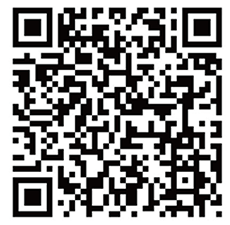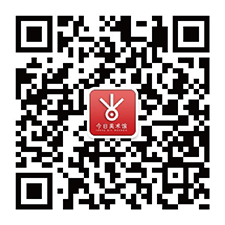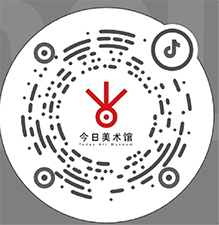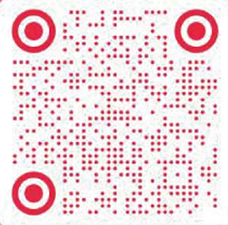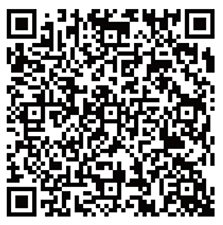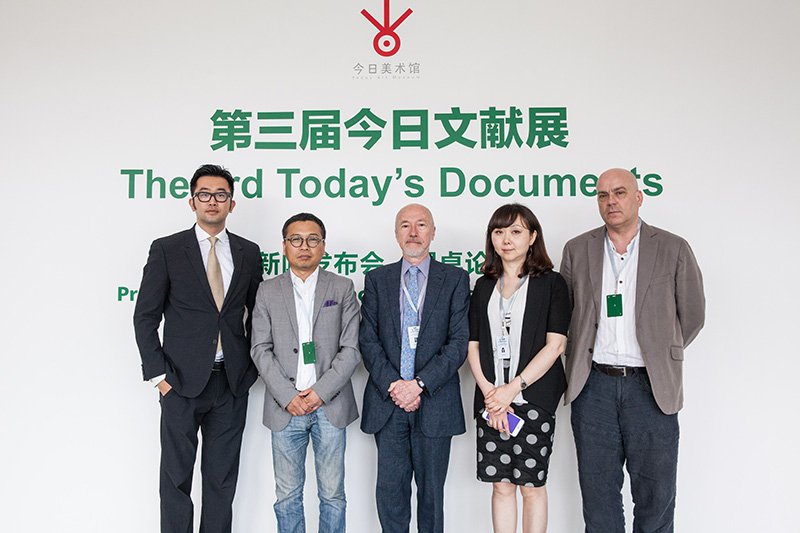
L to R, Alex Gao, HUANG Du, Gerardo Mosquera, SHAO Yiyang, Jonathan Harris
Beijing Today Art Museum presents “Documents” to define its cultural identity, gradually creating a platform for international art dialogues based on the Chinese context. This exhibition parallels biennials and triennials to encourage communication among different cultures and reflect on the relationship between Chinese contemporary art and the international artistic trends, under a global vision.
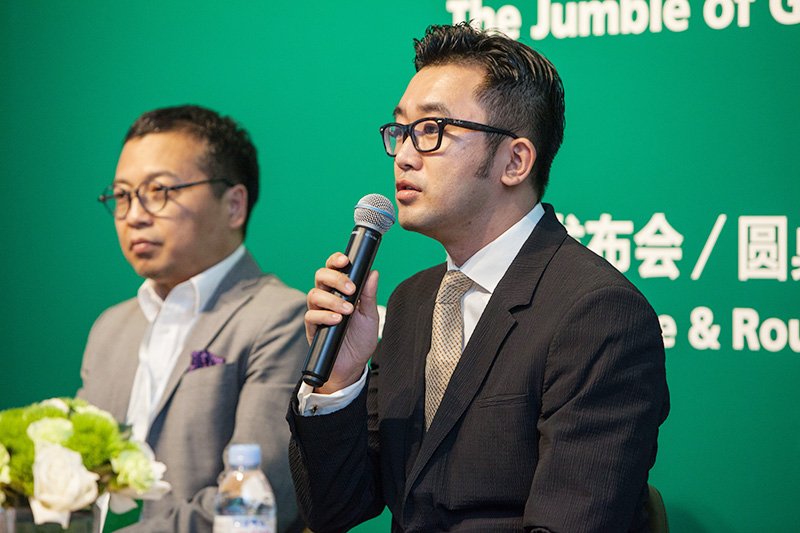
Director of Today Art Museum, Alex Gao.
Following the success of the previous Documents, the 3rd Today’s Documents will be held in Hall No.1 and No.3, TAM, on December 10th, 2016 and will be open during three months. This exhibition was designed by co-curators Huang Du and Gerardo Mosquera. Titled “BRIC-á-brac” (Chinese title: “另一种选择”), the 3rd Documents will invite over 50 artists/groups from different countries,Chinese artists such as NI Haifeng ; WENG Fen ;WANG Guofeng ; LU Lei ; LU Yang ; LU Zhengyuan etc, international artists such as Marcela Armas (México);Wim Delvoye (Belgium); Cristina Lucas(Spain);Gonzalo Díaz(Chile)Marepe(Brazil);Praneet Soi(India/Amsterdam);Thomas Hirschhorn(Switzerland/ Paris);AES+F (Russia);Chto Delat (Russia); Young Hae Chang Heavy Industries (South Korea) etc. To discuss its general theme from different cultural contexts, presenting the hybrid power spurt in the course of globalization.
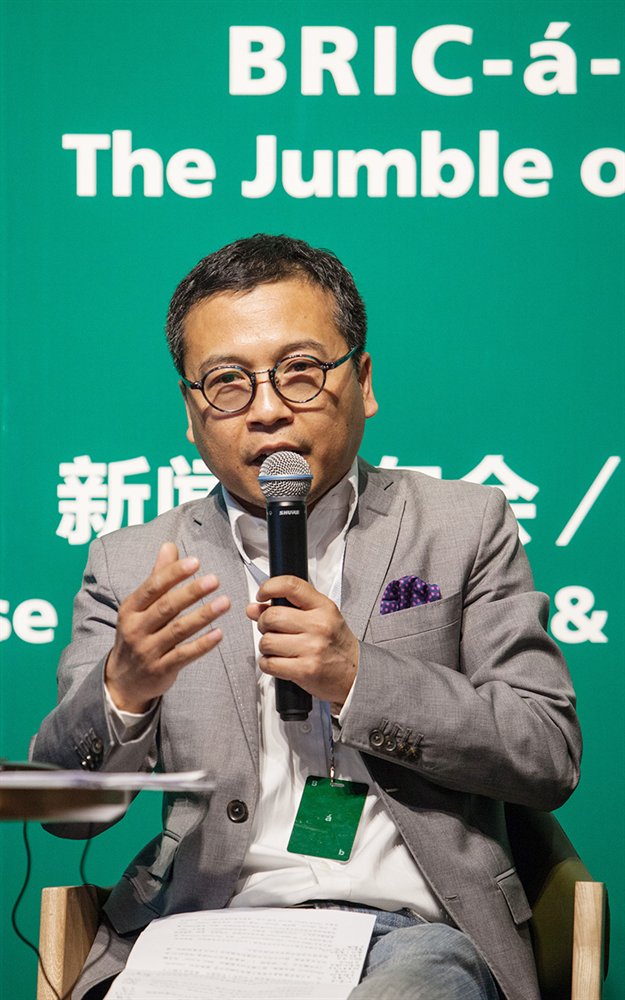
Co-curator of The 3rd Today's Documents, Huang Du
“BRIC-á-brac” is a French expression which means jumble, odds and ends, or an uneven group of things, with a certain undertone of confusion. The first word of this idiom coincides by chance with the acronym BRIC – Brazil, Russia, India and China –, launched in 2001 by economist Jim O'Neill, to discuss the major global economic role played by these four countries, which has been extended to other developing economies. So, the pun in the title refers to the qualitative complexities that economic growth and accelerated modernization have unchained in the “living” societies of emerging countries.
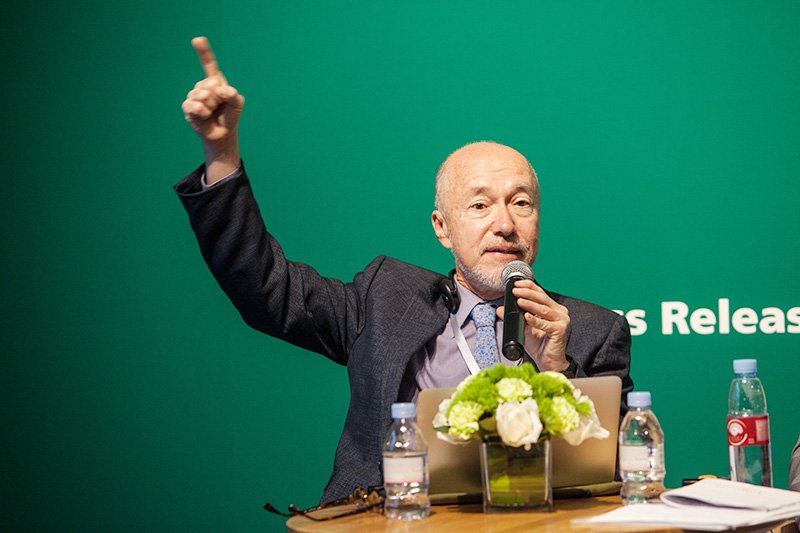
Co-curator of The 3rd Today's Documents, Professor Gerardo Mosquera.
The cultural integration based on global political economy leads to the co-existence of cultural interpenetration and cultural resistance:, a mixed landscape in which the global and the local interact. This exhibition discusses the substantial role of developing countries in the world’s economy and their strong influence, showing how art reflects on current economic, social and cultural processes.
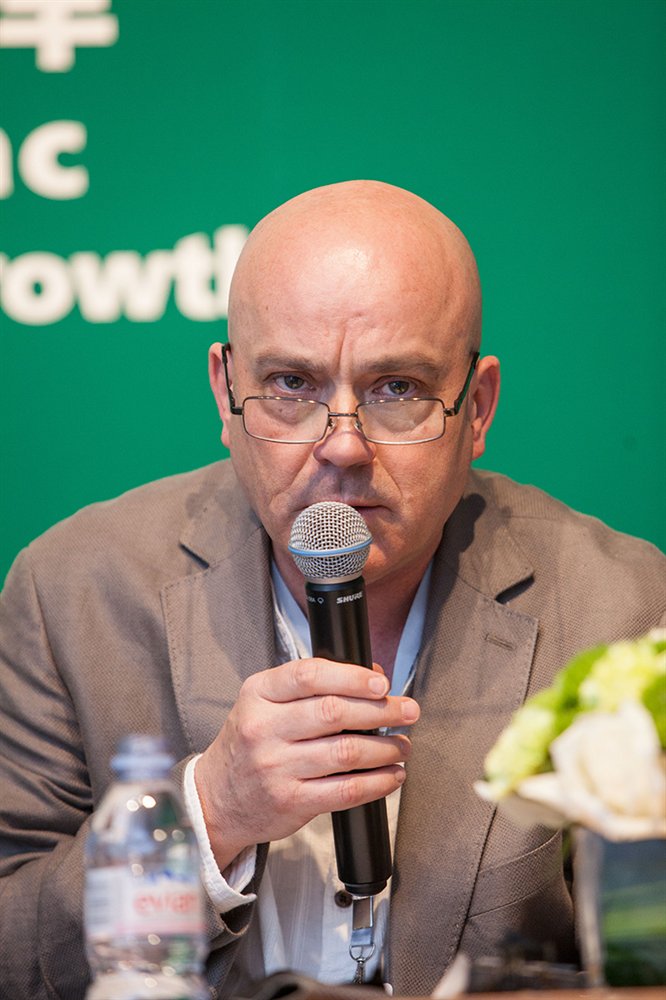
Professor Jonathan Harris, Head of Birmingham School of Art at Birmingham City University
The Chinese title “另一种选择” is actually a further explanation of “BRIC-á-brac”, emphasizing the cultural subjectivity of emerging countries and their independent cultural development. Although BRIC is an economic concept, the exhibition here tries to explore how art is reacting to fast growing economies and markets in developing countries from around the world, which find their own patterns in contemporary art. Such a diversified cultural map adds new vigor into global diversification and defines the cultural power of emerging countries. The shift introduced by this new economic map is forming a new feature of modernization. This is the meaning behind the Chinese title “另一种选择”.
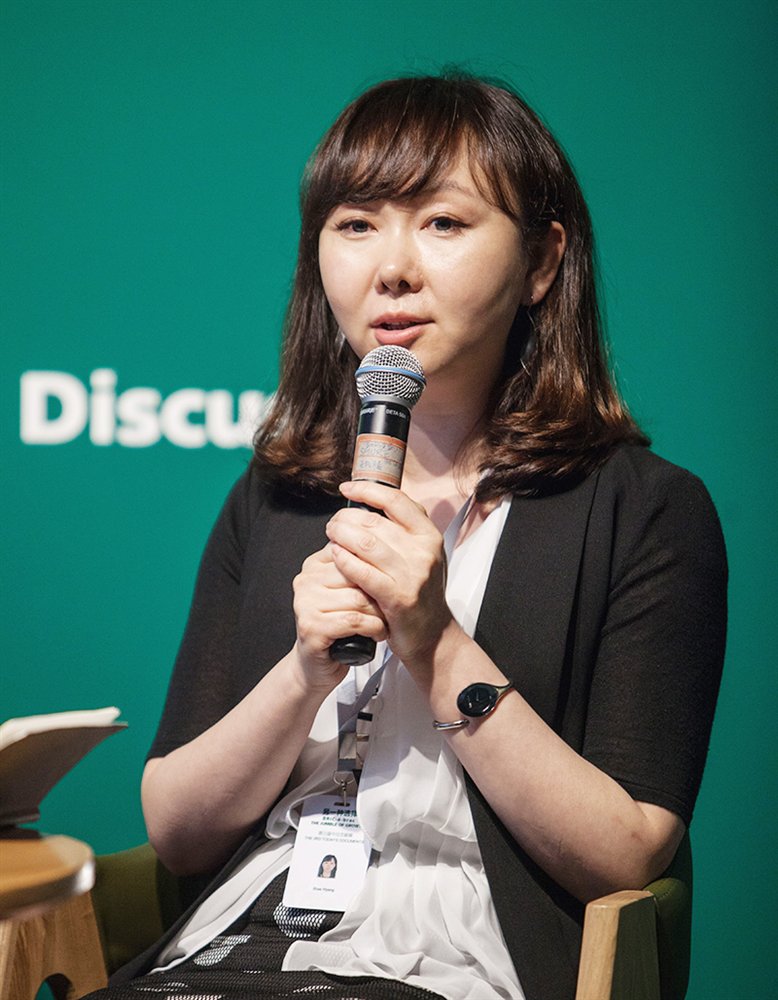
Professor SHAO Yiyang, Dean of School of Humanities of CAFA
The exhibition is divided in four parts: The Jumble of Growth, Chaotic Space, Discourse Practice and Individual Narrative, and Microscopic Bodies.
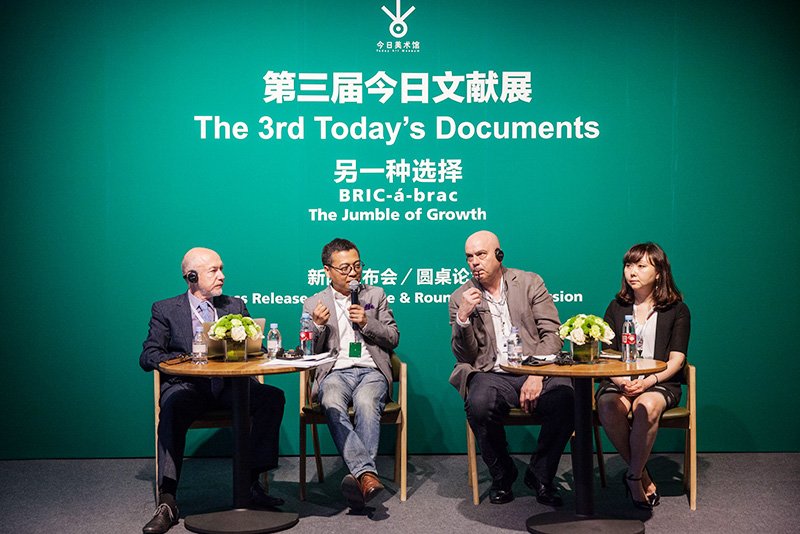
Round Table Discussion
1.“ The Jumble of Growth” shows the revolution of regional artistic foundations and the symbiosis of different foundations. Art is influenced by regional culture, religion, and customs, but the new cultural foundation after these transformations brings about new content for art. Meanwhile, globalization enhances communication among countries as well as the interaction of cultures. Thus, new cross cultural artistic elements and ideologies appear, which demand a global vision.
2. “Chaotic Space” reproduces the multi-dimensional spaces (urban space, public space, residence space, virtual space, etc.) in our complicated and diversified society, and presents their problems and positions. When these spaces encounter artists’ subjectivities, different opinions and imaginaries are stimulated, as well as different analysis and artistic expressions. Chaos in globalization and modernization actually provides a space for us to reflect on our living circumstances.
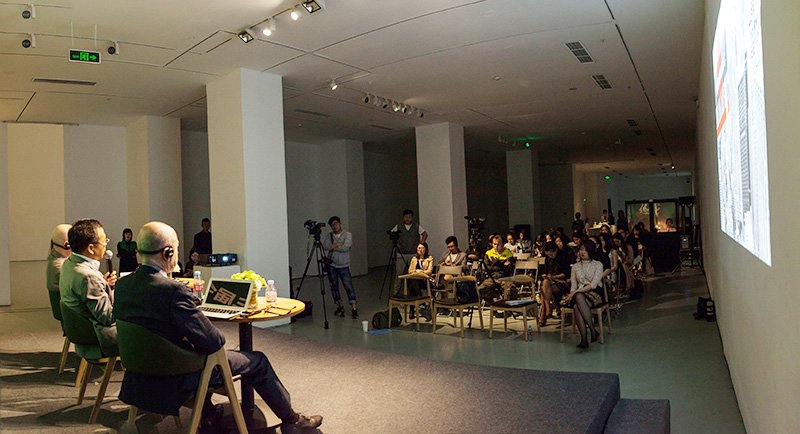
HUANG Du, Gerardo Mosquera, SHAO Yiyang, Jonathan Harris
3. “Discourse Practice” shows how artists deal with real problems in life, creating artworks that experiment with, interpret and criticize these problems. Thus the “silent” artworks speak out their positions, opinions and attitudes. Such artistic practice is not only an active and personalized response to real life, but also a demonstration of cultural consciousness and subjectivity.
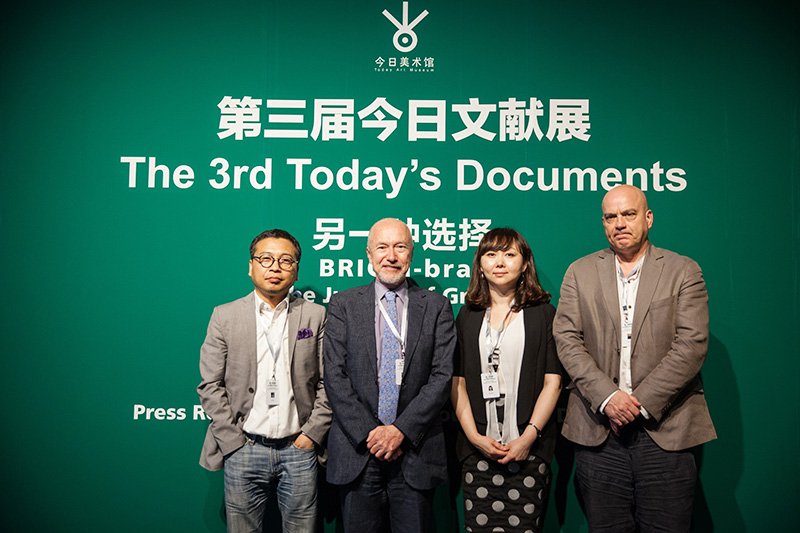
HUANG Du, Gerardo Mosquera, SHAO Yiyang, Jonathan Harris
4. “Individual Narrative and Microscopic Bodies” aims to display the consciousness of life and status of individuals within the macroscopic social landscape. That is, using life instinct, existential affections and circumstances as the focus of individual narratives. Furthermore, the body, as the motif and carrier of artistic narration, is often regarded as a signifier. It usually engages with topics such as the complicated human conditions and their cultural boundaries. Bodies do not exist in isolation in the postmodern discourse. They are, instead, the bond of social relations, and they carry meanings at several levels: the body of nature, the body of society and the body of science. Artists look at the body as a medium for art, one which is beyond the limitations of the physical body. Based on such distinctive perspective, the artists use the body as a medium for art narration to explore and express the potential and the infinity in our bodies.
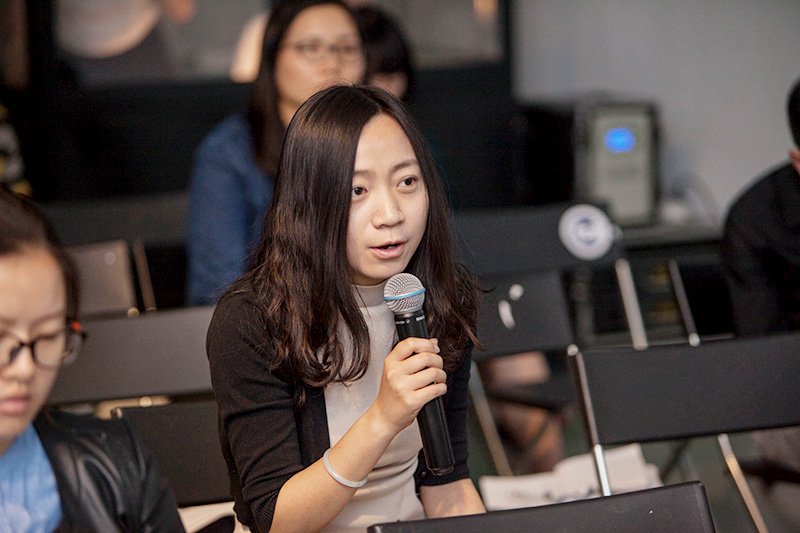
Q & A
The 3rd Today’s Documents aims to put forward a sharp cultural proposition. It works as a platform for communication in international art and illustrates -- by vivid and philosophic images -- the rise of fast emerging countries, and the deepening crisis in globalization and capitalism: a relationship of contradiction, conflict, interdependence and competition. The exhibition builds a path for the encounter of different cultures and encourages their self-recognition while discovering other cultures, so that a new cultural landscape could be created based on artistic dialogues and sharing. To summarize, the 3rd Today’s Documents is held to reflect on traditional issues while facing contemporary problems, and to explore cultural connotations while displaying the status quo of contemporary art.
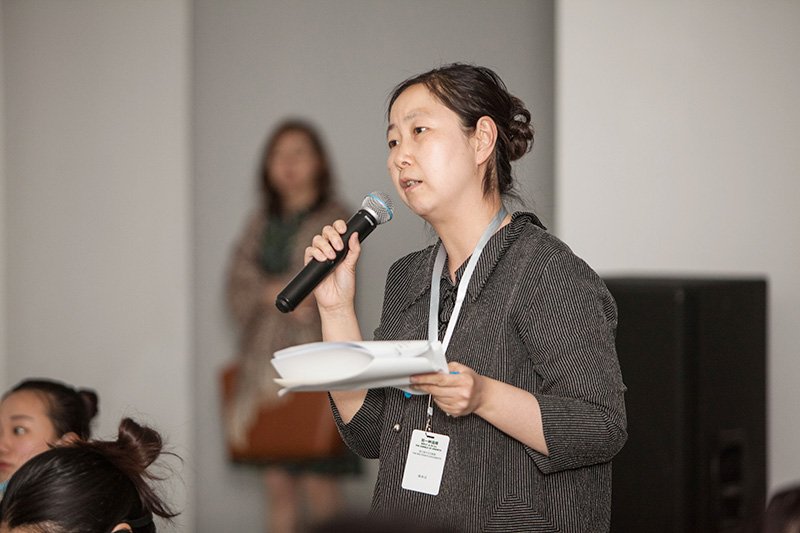
Q & A
As part of the press conference, a panel discussion will focus on the exhibition’s theme. It is our pleasure to invite two famous scholars to analyze from different angles the complex topics presented by the exhibition.
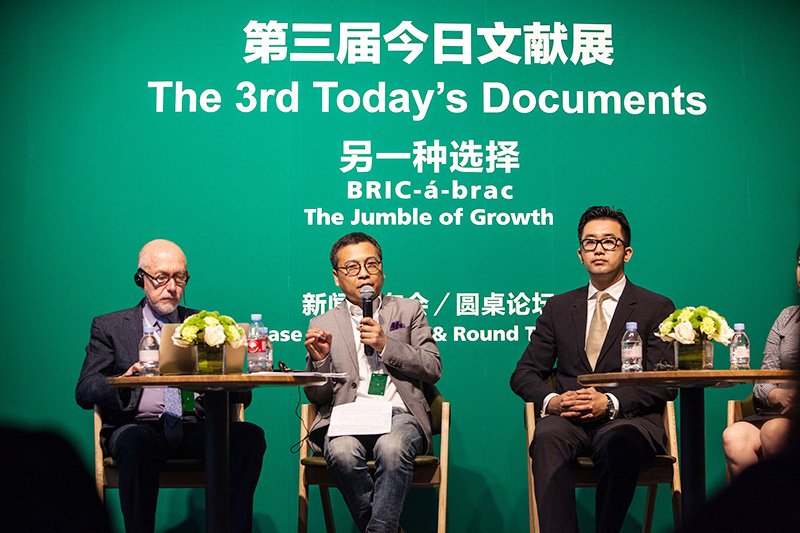
Q & A
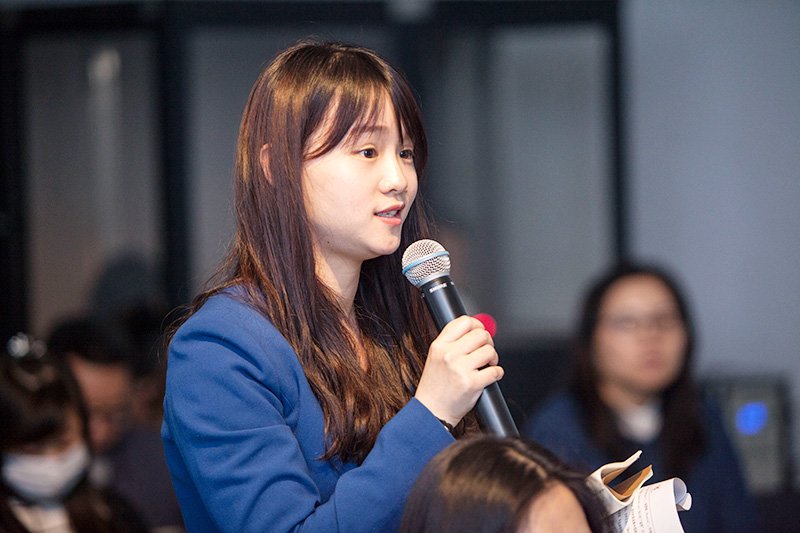
Press Release Conference
Brief introduction of curator
► Huang Du, independent curator, critic. Huang Du graduated in History of Art at Central academy of Fine Arts (CAFA) in 1988. He has published numerous critical articles and essays on contemporary art for magazines and catalogues internationally, especially in China, Japan, Korea, Netherland and Australia. As a speaker and jury member, he has been invited to participate in many important international art symposiums and art awards including the Chinese Contemporary Art Award, Credit Suisse Today Art Award 2010-2012 and Nissan Art Award 2013,etc. His major curatorial projects include Shanghai Biennale, the 26th Sao Paulo Biennale (2004), Nanjing Triennial (2013), solo exhibition of Jannis Kounellis: Translating China and curator for Chinese Pavilion of the 50th Venice Biennale, 2003.
► Gerardo Mosquera, independent curator, critic, art historian, and writer based in Havana, Cuba. He was one of the organisers of the first Havana Biennial in 1984 and remained until 1989. Since then, he has been traveling, lecturing and curating exhibitions in more than 80 countries. Mosquera was adjunct curator at the New Museum of Contemporary Art, New York, from 1995 to 2009. His publications include several books on art and art theory, and more than 600 articles, reviews and essays have appeared in such magazines as Aperture, Art in America, Art & Text, Art Criticism, Art Journal, Art Nexus,etc. Among other volumes, Mosquera has edited Beyond the Fantastic: Contemporary Art Criticism from Latin America: International Perspectives on Art and Culture. His theoretical essays – which have been influential in discussing art’s cultural dynamics in an internationalised world, and contemporary Latin American art – are dispersed in English, but have been collected in books in Caracas and Madrid in Spanish, and in Chinese in Beijing. Mosquera was the Artistic Director of PHotoEspaña, Madrid (2011–2013).
Brief introduction of honorable Guests
► Jonathan Harris , PhD, Professor, Head of Birmingham School of Art at Birmingham City University in England. He has produced twenty books, including Globalization and Contemporary Art (Blackwell, 2011) and The Utopian Globalists: Artists of Worldwide Revolution 1919-2009 (Blackwell, 2013). Harris edited a special edition of Third Text journal entitled ‘Global Occupations’ (2013) concerned with contemporary Art and politics in Asia. His new book is The Global Contemporary Art World: A Rough Guide (Blackwell, 2017), containing chapters on contemporary art and social relations in Hong Kong, India, PRC, South Korea and Palestine/Israel. Harris has taught and lectured at many universities and museums around the world, including recently at Seoul Museum of Art, South Korea; Montclair University School of Art New Jersey, USA, Aarhus University, Denmark; and Art Basel Hong Kong. Harris’s next project is The Myth of the Art Market: Contemporary Art in the Social Order of Neoliberalism (IB Tauris). With Menene Gras (Casa Asia) and Bashir Makhoul (BCU Deputy Vice Chancellor) he is editor of a new series of books, Contemporary Art and Visual Culture in Global Asia (IB Tauris). The first book in the series, an anthology with this title, is forthcoming and will contain more than 30 newly commissioned essays on this theme.
► SHAO Yiyang, PhD, Professor, Dean of School of Humanities, Central Academy of Fine Arts. PhD in Art History, University of Sydney; MA(Hon.) 1996, University of Western Sydney; Her academic research focuses on Western modern/contemporary art history theory and Chinese modern/contemporary art. Yiyang has delivered papers and presentations at numerous academic conferences including The 33rd International Conference of Art History (CIHA), Nuremburg, Challenge of Object, 2012; She has had numerous publications and her most recent book publications include; Beyond Postmodern, Peking University Press, Beijing 2012.Art After Postmodern, 2012. Chinese Modern Art 1980s and 1990s (in English) UMI.il .USA, 2005.
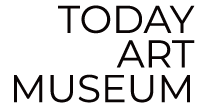
 Zhiguan: Wang Zimu Art Exhibition
Zhiguan: Wang Zimu Art Exhibition Seasons of Cezanne The Immersive Experience
Seasons of Cezanne The Immersive Experience Marie de Villein: Behind the Sun
Marie de Villein: Behind the Sun “一粒一世界——北京大学颗粒艺术展”
“一粒一世界——北京大学颗粒艺术展”
 Florentijn Hofman :Celebrate!
Florentijn Hofman :Celebrate! Li Nu: As if Sand Were Stone
Li Nu: As if Sand Were Stone Exhibition customization course | TIM YIP MIRROR children's art class
Exhibition customization course | TIM YIP MIRROR children's art class
 TAM Open Studio / Hello, New Friends
TAM Open Studio / Hello, New Friends WANG SHIKUO/TODAY ART MUSEUM YOUNG ARTIST RESIDENCY IN NEW YORK CITY
WANG SHIKUO/TODAY ART MUSEUM YOUNG ARTIST RESIDENCY IN NEW YORK CITY 2018 third wang shikuo award -- nomination exhibition of contemporary young artists
2018 third wang shikuo award -- nomination exhibition of contemporary young artists


